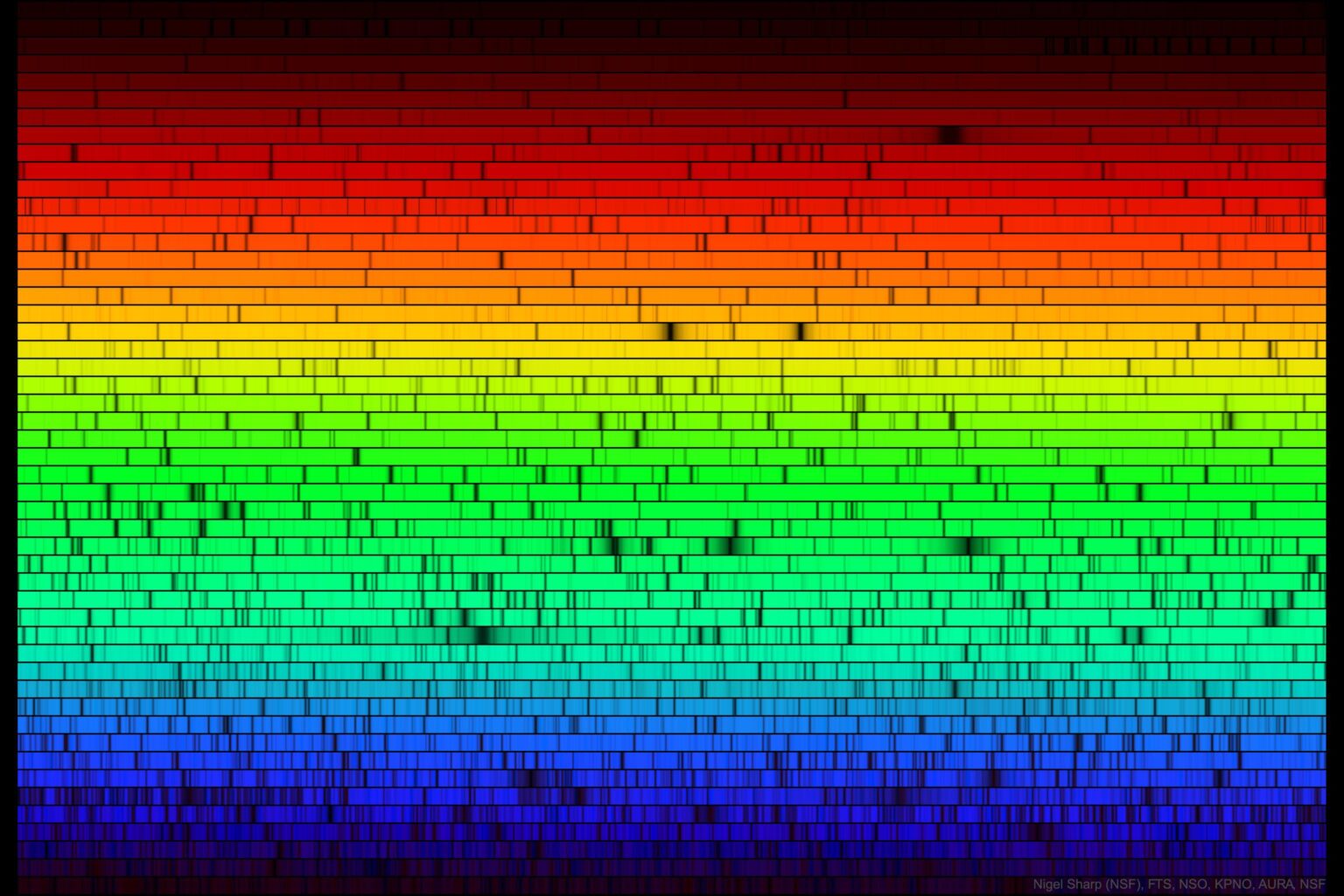Among NASA’s recent publications in the “Photo of the Day” ranking, an image has appeared that showcases all the visible colors of the Sun. The enchanting picture, created by the McMath-Pierce Solar Observatory, reveals that although the Sun often appears white-yellow, it actually radiates light in nearly all colors.

As seen on DIY Photography, this vibrant photo contains significant information about our star. It’s worth noting that although NASA APOD published this photo recently, it first appeared on NASA’s website in 2017.
History of Spectroscopy
“The dark patches in the shown spectrum arise because gas on or above the Sun’s surface absorbs sunlight. Since different gases absorb different colors of light, it is possible to determine what gases the Sun is made of,” explains NASA.
Considering the vital importance of the Sun for life on Earth, it is quite natural that scientists have identified all the Sun’s absorption spectral lines. However, that is not the case. Some elements were discovered thanks to the solar spectrum, including helium, which was detected in the solar spectrum in 1868. Described as the “first alien element,” helium was discovered on Earth approximately ten years after scientists found it in the solar spectrum.
The dark absorption lines visible through a spectrograph prism puzzled scientists for decades. It was only in 1859 when Gustav Kirchhoff and Robert Bunsen noticed that heating certain chemical substances in a Bunsen burner produced bright emission lines at the same wavelengths where dark lines appeared in the solar spectrum.
Although technology has significantly changed since then, the exquisite spectrum image created at the McMath-Pierce Solar Observatory is also based on a prism-like instrument.
The Sun is not yellow
Despite the fact that the Sun is often depicted as yellow, orange, or even red, “it is, in fact, a mixture of all colors that appear white to our eyes,” explains the Stanford Solar Center. This can be observed not only through prisms but also by looking at a rainbow, which demonstrates that sunlight is separated into different wavelengths.
Regarding why the Sun appears yellow, orange, or red during sunrise or sunset, it is because the shortest solar wavelengths – green, blue, and violet – are scattered by the Earth’s atmosphere at that angle. Only red, yellow, and orange light reach human eyes through the atmosphere.
There is also a common misconception that the peak of solar radiation corresponds to the yellow color. However, as shown in the multispectral photo, the largest section is green, while the yellow color plays a relatively secondary role.
“The Sun emits the most energy around 500 nm, which is close to blue-green light. Hence, one could say that the Sun is blue-green!” explains NASA.
Earlier, we reported on how it is possible to observe sunspots without a telescope.
